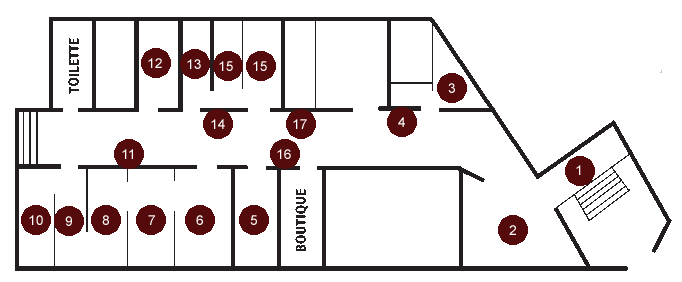Section 1: Entrance hall

The displays in the lower section of the entrance hall recount the various stages of the Peaceful Revolution in Leipzig. These include the unauthorised demonstration on 15 January 1989 held to mark the 70th anniversary of the deaths of Karl Liebknecht and Rosa Luxemburg, (the founders of the Communist Party in Germany, who were murdered in 1919), the campaigns to expose ballot rigging at the local elections on 7 May, the environmental pilgrimage along the River Pleisse in Leipzig on 4 June, the busking festival held on 10 June, and the mass demonstration on 9 October 1989, which passed right outside the “Runde Ecke” (this building, which at that time was the district headquarters of the Stasi).
On the evening of 4 December, members of the public occupied the Stasi’s district headquarters. That very night the Citizens Committee Leipzig was set up, which halted the Stasi’s work of shredding its own files and took control of everything still left. Later on, the Citizens Committee Leipzig was involved in drawing up legislation regulating what was to be done with the Stasi’s files and compiled an exhibition entitled “Stasi – Power and Banality”, which was first opened on 10 June 1990 on Sachsenplatz and visited by between 2,500 and 3,000 people every day. This enormous interest prompted efforts to organise a permanent venue, which resulted in the exhibition being reopened here in the “Runde Ecke” on 31 August 1990.
Photos and documents in the entrance hall recall the history of the building, which was erected in 1911–1913 as the headquarters of a fire insurance company. After World War II it was used for a few months by the American army first, followed by the Soviet NKVD (a forerunner of the KGB), and then K5, the Stasi’s predecessor. In 1950, one year after the foundation of the German Democratic Republic (GDR), the building was taken over by a department of the Ministry of State Security (Ministerium für Staatssicherheit), or Stasi for short. In 1952, when the federal states where replaced by districts, it became the district headquarters of the Stasi.
The decision to have the walls of the entrance hall covered with marble was taken by the first owner. However, the linoleum flooring, yellow wallpaper, folding grilles on the doors and windows, exposed cable ducts and old radiators were all fitted after 1950. The Citizens Committee Leipzig retained most of these items in order to keep the authentic setting.






